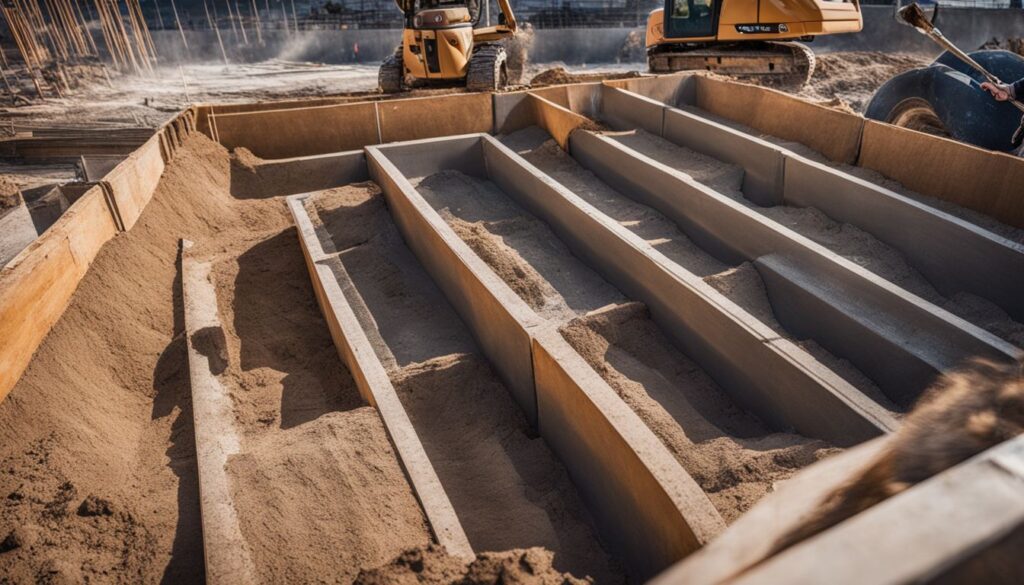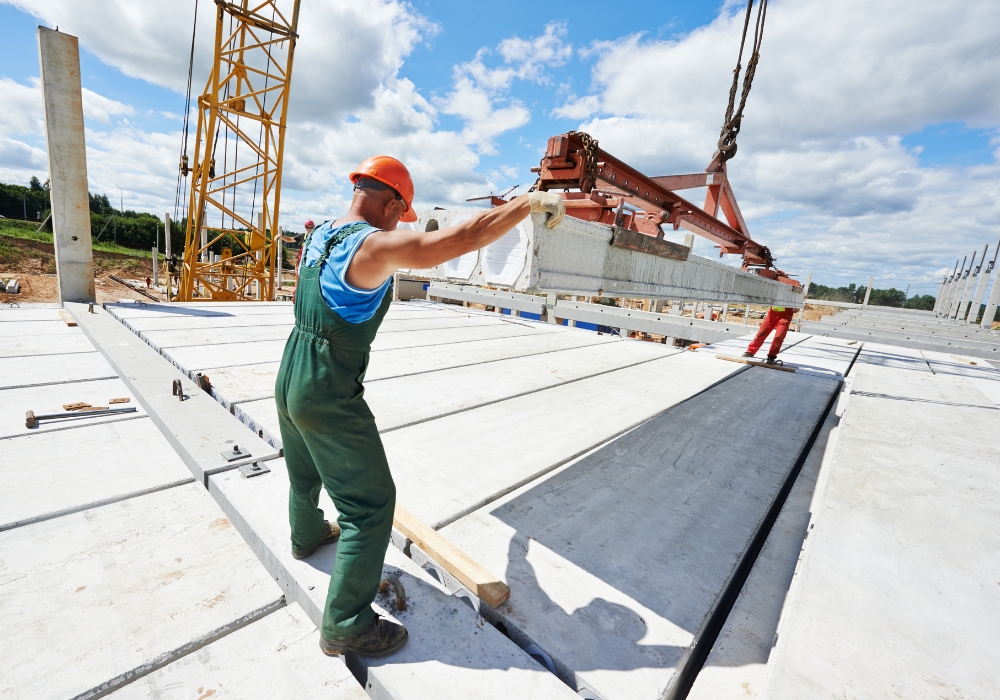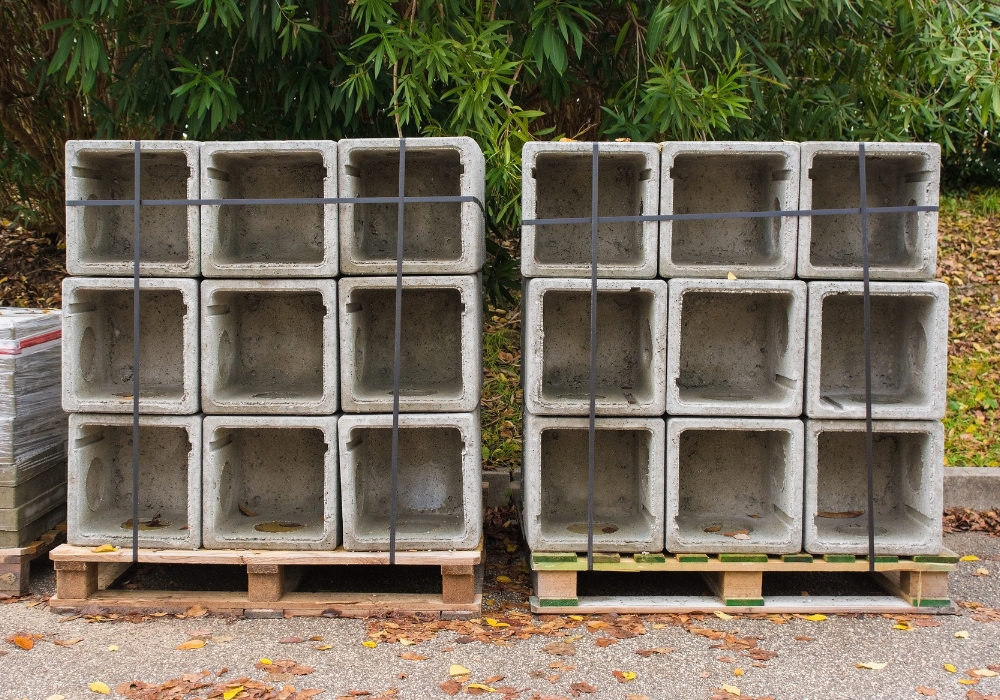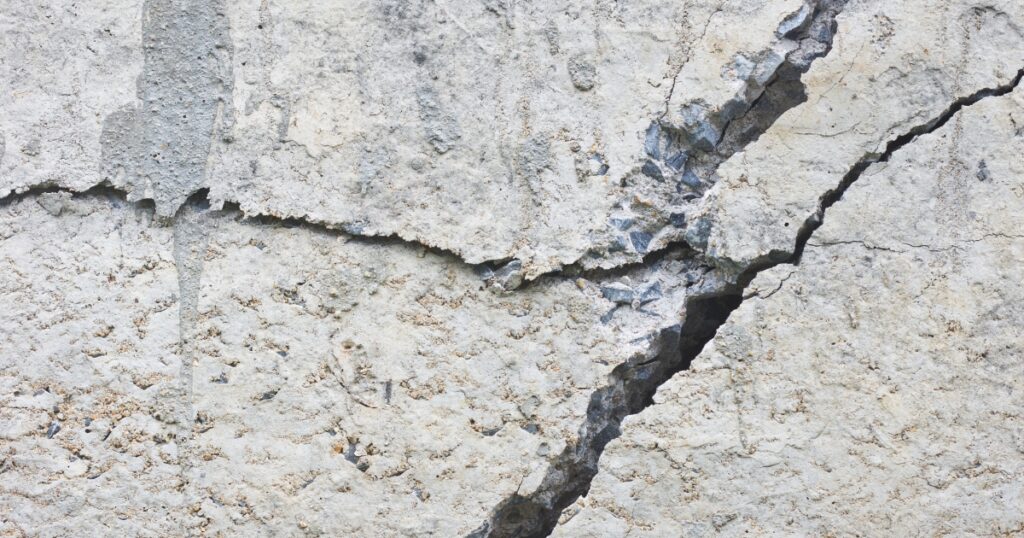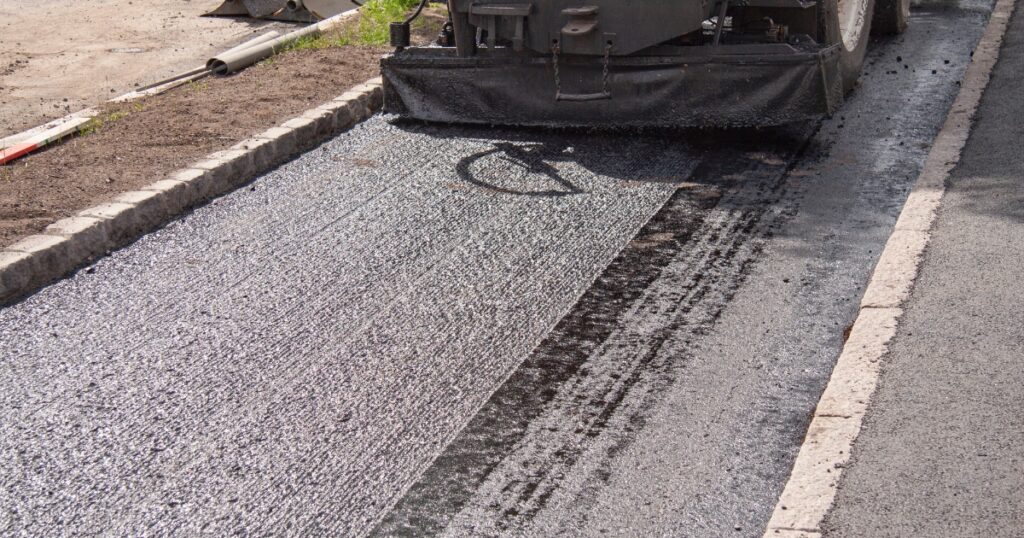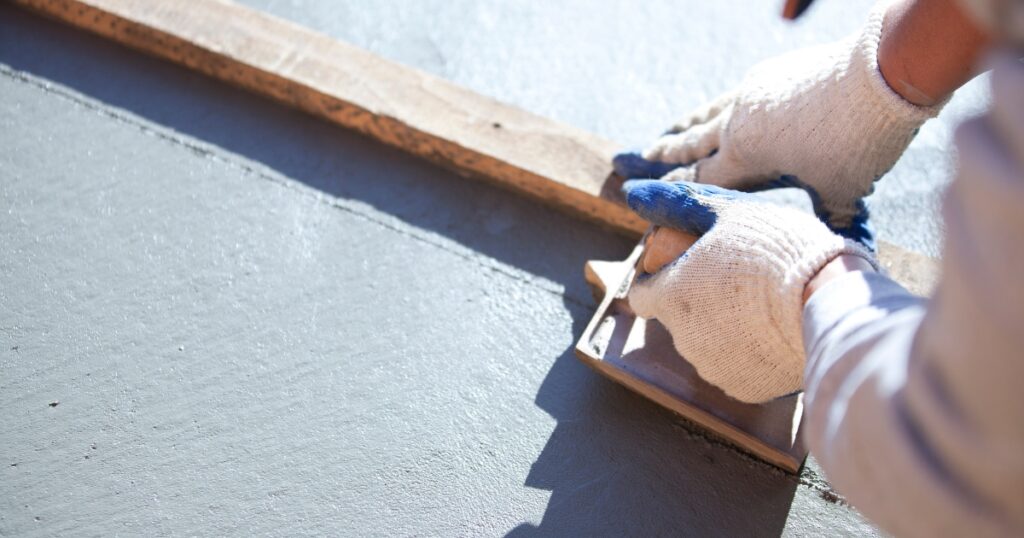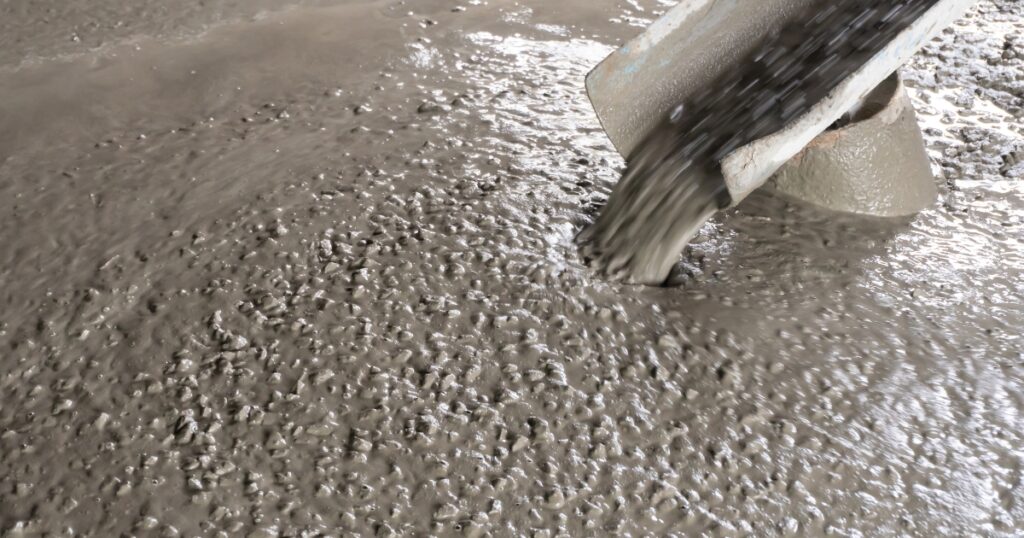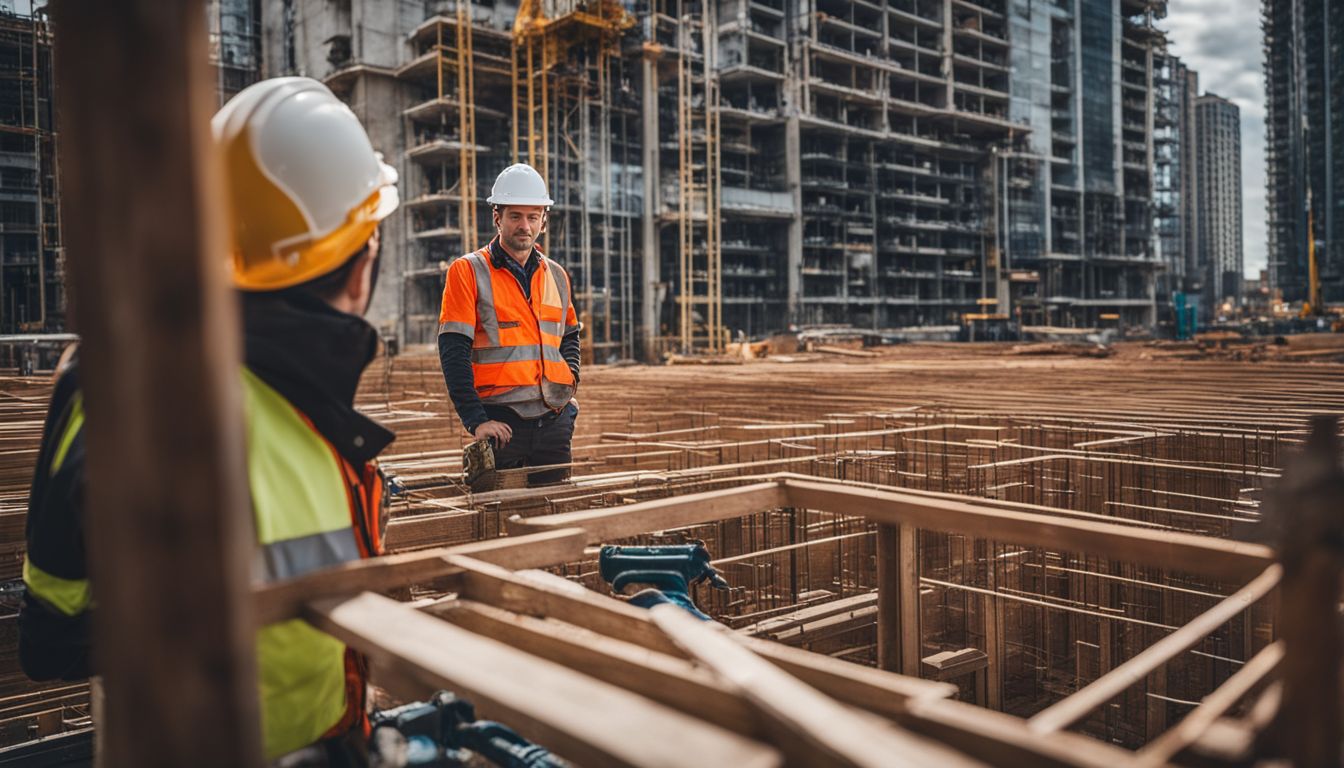
Navigating the world of construction support in Maitland can be a bit of a headache, right? We get it because we’ve walked that path ourselves. Formwork is the backbone of any solid build, and getting your head around it is crucial for ensuring your structures don’t just stand up but last the distance.
Our deep dive into this critical topic sheds light on techniques and nuggets of wisdom on acing formwork. Ready to lift your projects from good to great with foundations that are as solid as a rock? Stay tuned!
Understanding Formwork and Its Role in Construction
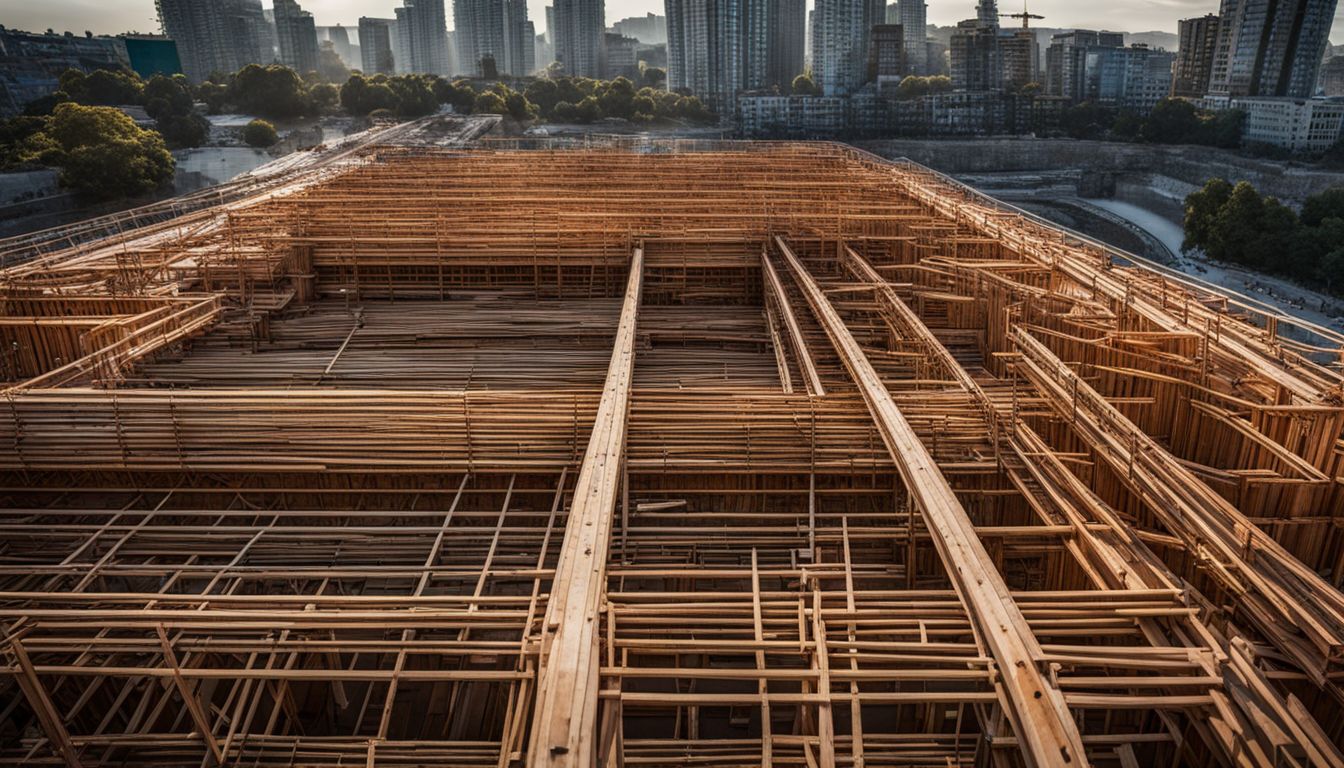
Formwork plays a crucial role in construction by providing the necessary framework for concrete to be poured and molded into structural elements. It ensures the accurate shaping of foundations, footings, and other essential components, thereby underpinning the structural integrity of buildings.
Defining Formwork
We often describe formwork as the temporary or permanent moulds into which concrete is poured to shape and support it until it can stand on its own. It’s a crucial component in building the strong, precise structures we see across Maitland.
This system not only shapes the concrete but also plays a vital role in ensuring safety and structural integrity during construction.
Our mastery of formwork allows us to create complex designs with high durability, demonstrating its essential role in achieving Maitland’s renowned architectural strength. Through strategic planning and execution, we ensure that each structure meets stringent standards, contributing significantly to the backbone of our city’s infrastructure while aligning with rigorous safety regulations.
The Role of Formwork in Structural Integrity
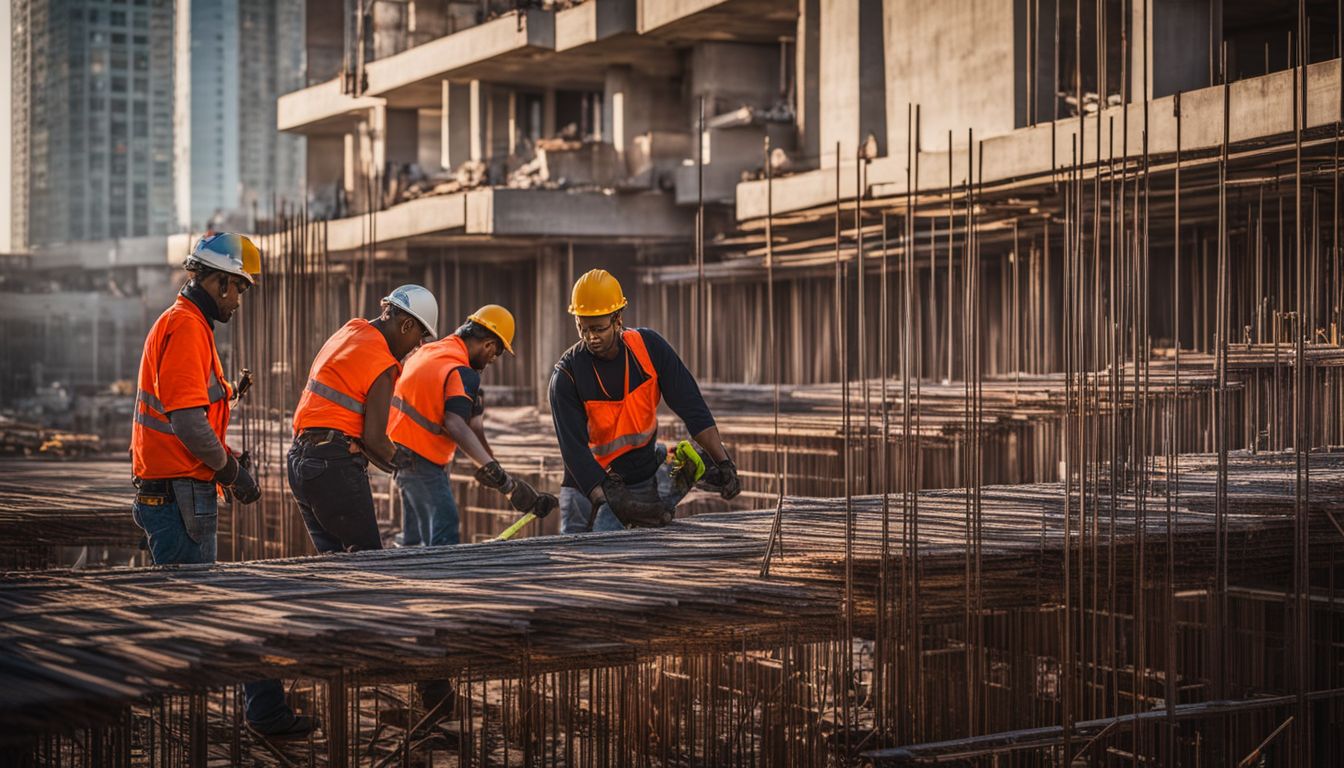
Formwork plays a critical role in ensuring the structural integrity of buildings and infrastructure. It provides temporary support for concrete until it hardens to become capable of supporting itself.
The correct installation of formwork directly impacts the strength, durability, and safety of a construction project. Precise formwork ensures that the dimensions and locations are accurate according to design specifications.
This contributes significantly to Maitland’s reputation for quality construction projects that stand the test of time.
Properly designed and implemented formwork systems also help prevent potential construction failures by evenly distributing the weight and stresses during the concrete curing process.
Our focus on mastering formwork reflects our commitment to upholding high standards in building safety and longevity, contributing vitally to Maitland’s structural integrity across all our projects.
Excellence in formwork is not just about shaping concrete; it’s about shaping futures.
Key Elements of Formwork
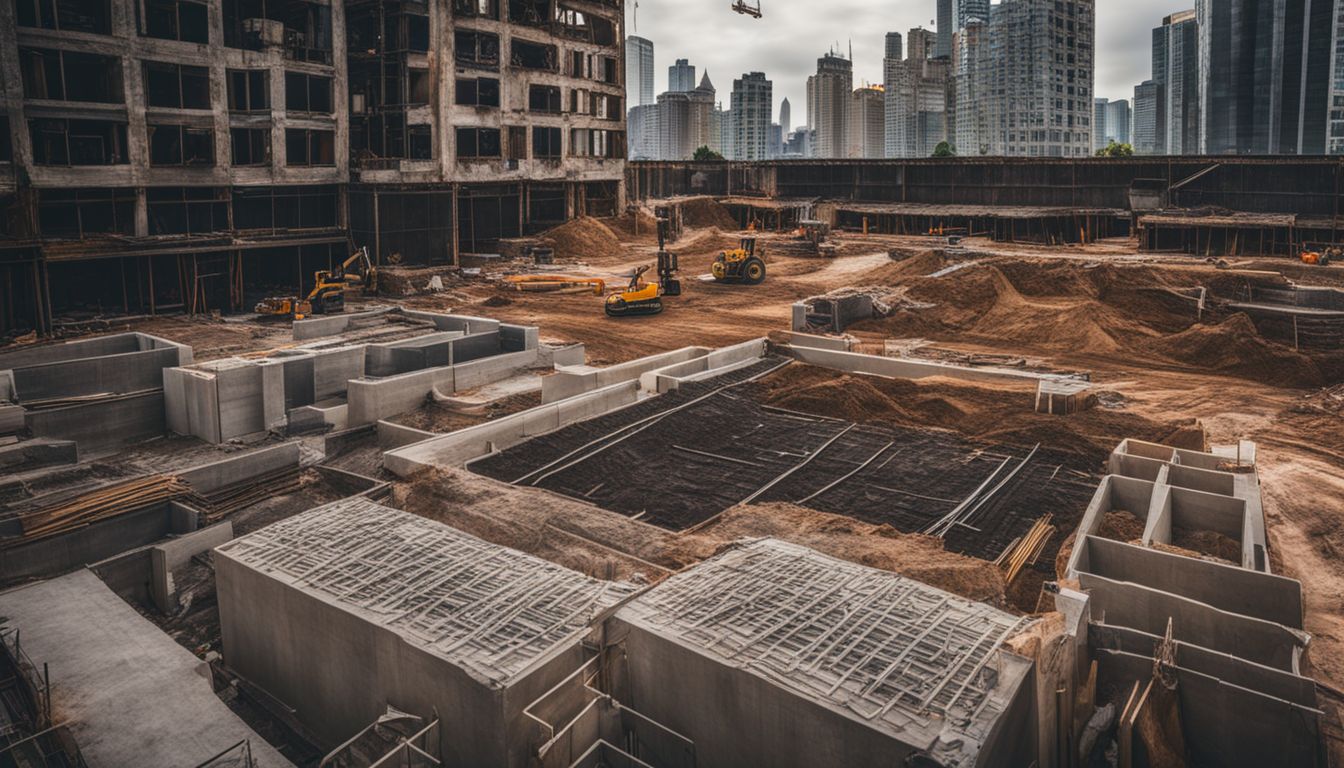
Formwork plays a crucial role in the construction of foundations, footings, and structural members. It provides the necessary mold for pouring concrete, shaping it into the desired forms to create sturdy structures.
Each element necessitates precise formwork to ensure the integrity and strength of the overall construction.
Foundations
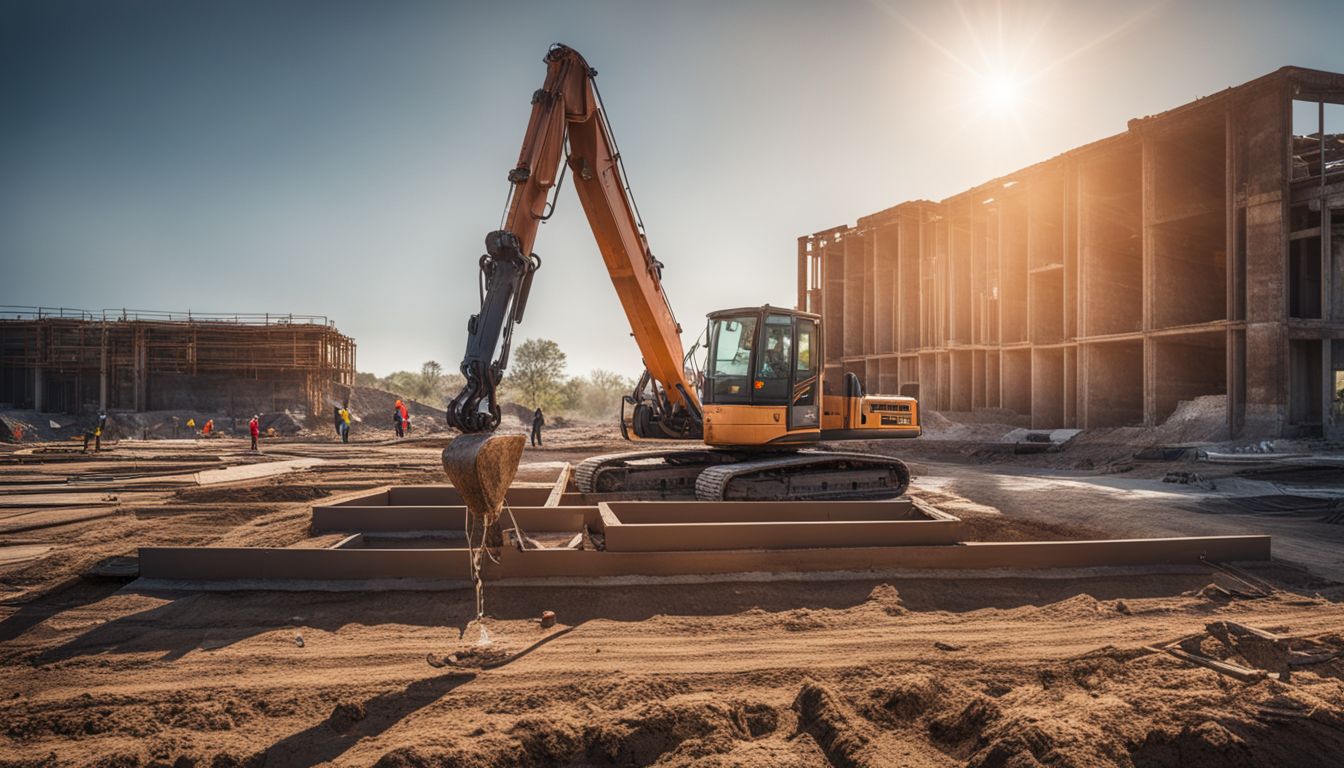
We understand the crucial role foundations play in ensuring the structural integrity of any construction project in Maitland. They serve as the solid base that supports everything above ground.
Our approach involves careful planning and precise execution to create foundations capable of withstanding various stresses over time.
Our team focuses on aligning every foundation element perfectly to prevent future issues such as cracking or settling that could compromise a building’s stability. We employ state-of-the-art techniques and materials, reinforcing our commitment to quality and durability in every project we undertake.
This foundational work ensures that Maitland’s buildings stand tall and strong, reflecting our mastery in formwork within the construction industry.
Footings
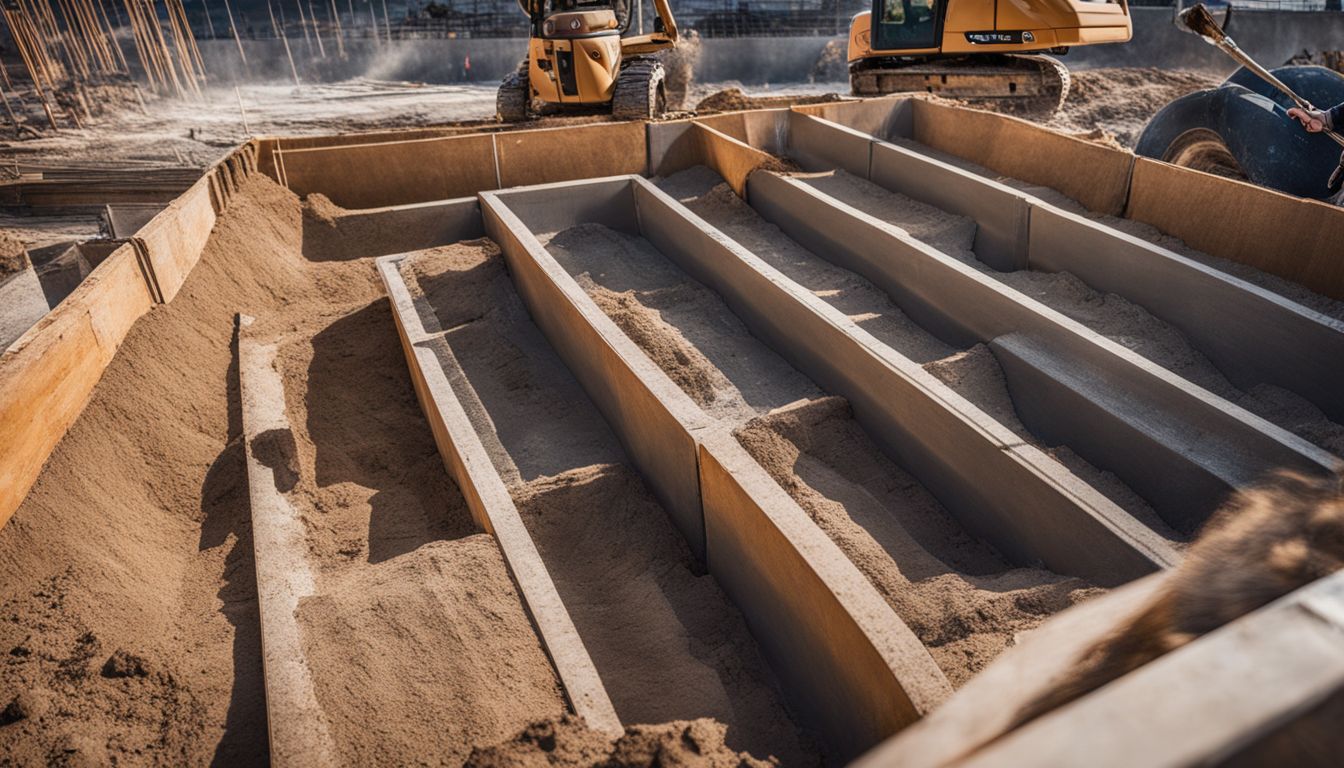
Our work often starts with footings, those critical elements that ensure a building’s stability and structural integrity. These foundational pieces spread the weight of the entire structure evenly across the soil, preventing sinking and settling.
In Maitland’s dynamic construction landscape, we pay special attention to footing design to counter challenges posed by varied soil conditions. Every project receives a custom approach; no two footings are identical owing to differences in soil composition, moisture content, and load requirements.
We meticulously plan each footing’s dimensions, materials, and placement methods. This careful preparation prevents future structural issues, giving our structures their enduring backbone of strength.
In all our projects across Maitland, we adhere strictly to safety regulations while crafting these essential components of formwork mastery. The right footing not only supports the physical building but also boosts confidence among business owners investing in new constructions or renovations.
Structural Members
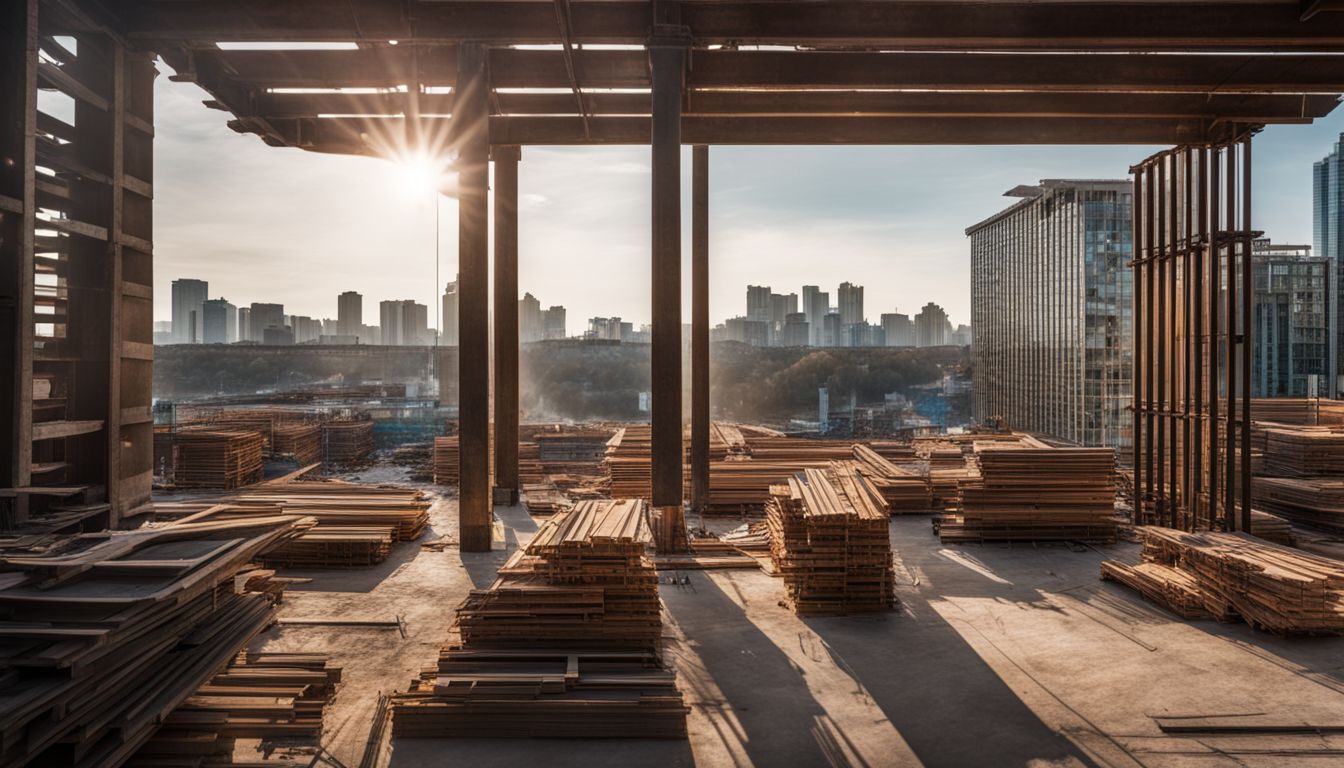
After laying the foundational footings, we shift our focus to structural members. These critical components serve as the backbone of Maitland’s construction projects, upholding structural integrity and ensuring lasting durability.
Structural members include beams, columns, and slabs—each playing a pivotal role in distributing loads effectively throughout the building.
Structural members are essential for maintaining the strength and stability of buildings in Maitland.
We meticulously design these elements to withstand various stresses caused by external forces such as weather conditions and the weight of the structure itself. By applying our mastery in formwork design to these components, we guarantee not just safety but also optimal performance over a building’s lifetime.
Exploring Different Types of Formwork
Exploring the different types of formwork ensures a comprehensive understanding of the various methods and materials used in construction. This knowledge lays the foundation for informed decision-making when it comes to choosing the most suitable formwork for a specific project.
Conventional Formwork
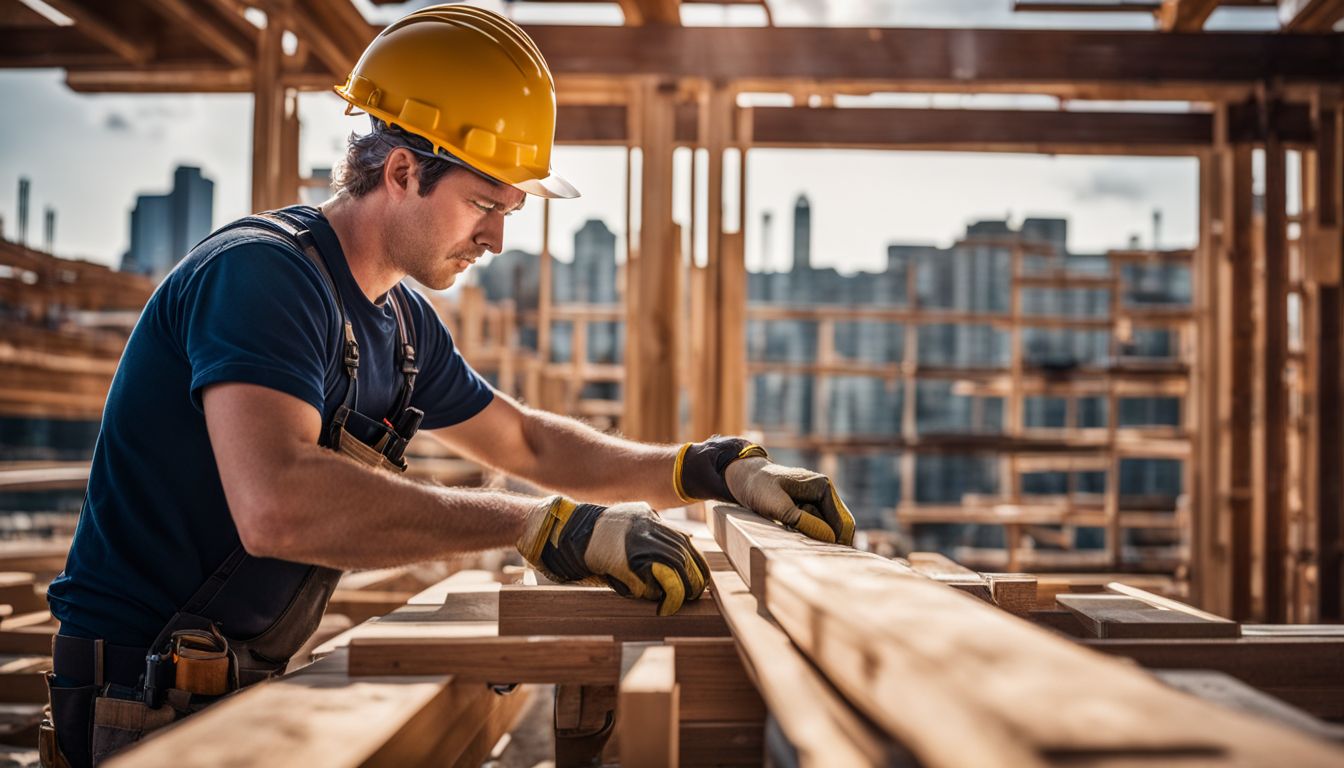
Conventional formwork plays a crucial role in the construction process, serving as the backbone of Maitland’s structural integrity. We rely on this traditional method to create solid foundations and shape concrete into desired forms before it hardens.
Our team selects high-quality materials like timber, plywood, or steel to construct these temporary moulds for concrete placement. This choice depends on factors such as complexity and load requirements.
We focus on precision and safety during assembly to ensure each structure meets our rigorous standards. The adaptability of conventional formwork allows us to tackle various projects, from simple residential buildings to complex commercial spaces.
Our expertise in designing and implementing this foundational element ensures that every project we undertake is built on a strong base, contributing significantly to Maitland’s reputation for durable and reliable structures.
Modular Formwork
Moving from the traditional techniques discussed, we explore modular formwork, which represents a significant leap forward in construction efficiency. Modular formwork systems offer a versatile and reusable solution for concrete structures, cutting down on both time and waste.
We assemble these prefabricated modules with speed and ease, bringing projects to life faster than ever before.
These systems boast remarkable flexibility, adapting to various shapes and sizes of architectural designs without sacrificing strength or quality. Our teams appreciate the predictability and reliability that modular formwork provides in our projects across Maitland.
Utilising this innovative approach not only streamlines our workflow but also enhances structural integrity – a testament to our commitment towards building excellence.
Slip and Jump Forms
Slip and jump forms are innovative techniques used in concrete construction, allowing for efficient vertical construction of large concrete structures. These forms enable continuous casting and climbing of the formwork to accommodate high-rise buildings and other tall structures.
The slip form method involves a moving mold that continuously casts the concrete, while the jump form technique entails a stationary mold with periodic repositioning to build one section at a time.
Both slip and jump forms offer significant advantages in terms of speed, productivity, and quality control in high-rise building construction. Their ability to create seamless structures with minimal joints makes them instrumental in achieving sturdy and durable concrete constructions.
Scaffolding Formwork
Scaffolding formwork provides a temporary framework to support workers and materials during construction. This type of formwork allows for flexibility in creating complex shapes and structures, making it an ideal solution for building projects that require customised designs.
Scaffolding formwork plays a crucial role in supporting the concrete as it sets, ensuring the structural integrity of the final construction.
Scaffolding formwork is versatile and adaptable, offering a practical solution for constructing various structural elements such as walls, columns, and beams. By providing stable support during the pouring and setting of concrete, scaffolding formwork contributes significantly to the strength and stability of the overall structure.
Importance of Falsework in Formwork Mastery
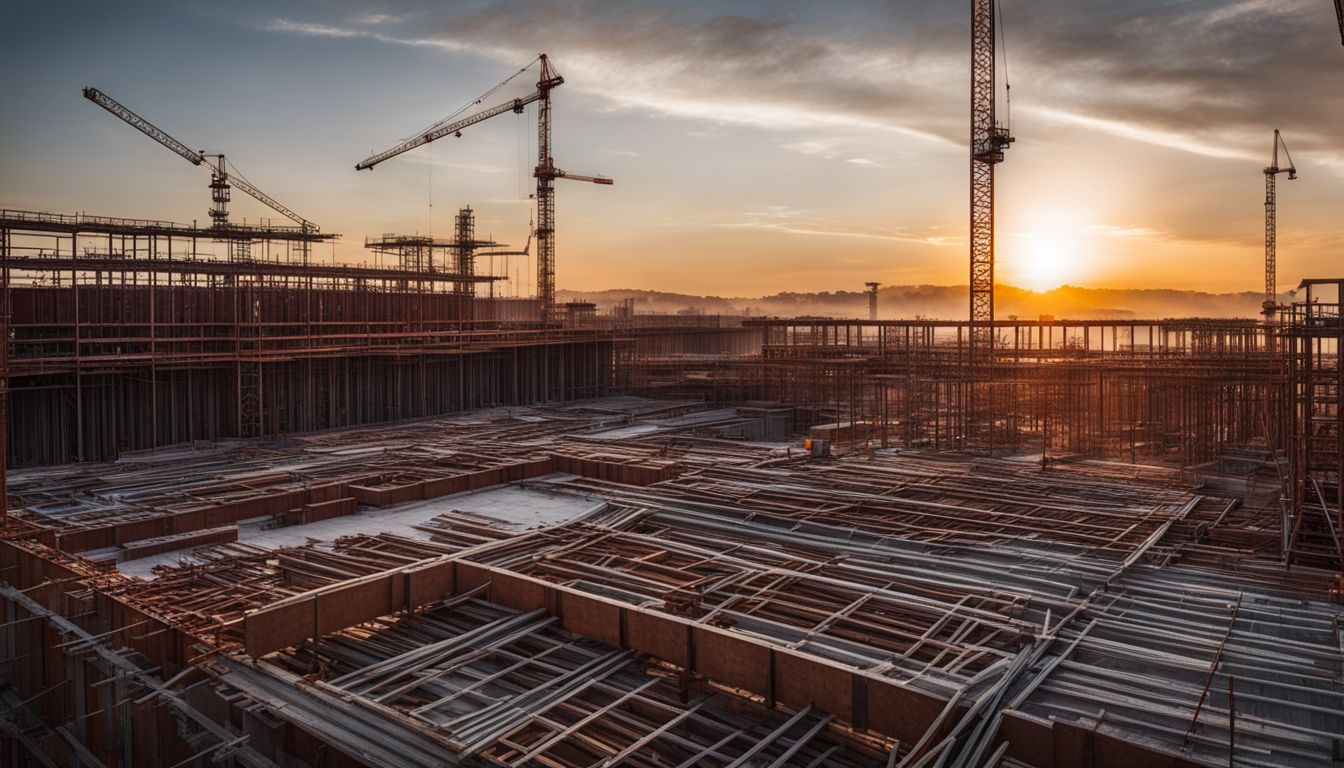
Falsework plays a crucial role in ensuring the stability and integrity of formwork during construction. It provides temporary support to structural elements, allowing for safe casting and curing of concrete, which is essential for maintaining the strength and durability of the final structure.
Role of Falsework in Formwork
Falsework serves as the essential temporary support structure in formwork, providing crucial stability during the concrete curing process. It plays a pivotal role in ensuring that the formwork maintains its shape and integrity until the concrete has set to bear its weight.
Falsework is indispensable for supporting vertical loads during construction activities, reinforcing framework strength for foundation and footing applications.
The robust falsework system ensures that structural elements are safeguarded against potential damage or collapse while maintaining their intended dimensions. This role particularly comes to the forefront with large-scale modular forms and slip forms, where accurate support becomes paramount for intricate designs and unique shapes.
A secure falsework design underpins successful formwork execution, contributing significantly to ensuring structural integrity from concept to completion.
Structural Importance of Falsework
Falsework plays a crucial role in supporting the formwork during construction, providing temporary structures that bear the weight of freshly poured concrete and ensure the stability of the entire framework.
Falsework is essential for distributing loads effectively, preventing deformation or collapse, and maintaining safety during construction. Its strategic placement and sturdy design support the formwork, ensuring accurate shaping and positioning of concrete elements such as walls and slabs.
Furthermore, falsework contributes to efficient construction processes by facilitating safe work conditions for personnel while enhancing productivity. Rigorously engineered falsework systems provide robust support for varied structural elements like beams, columns, or slabs – a fundamental requirement to achieve precise alignment and dimensions.
This steadfast structural support underpins successful concreting operations while adhering to stringent safety standards.
The Art of Concrete Formwork: Application in Retaining Walls and Specialty Concrete
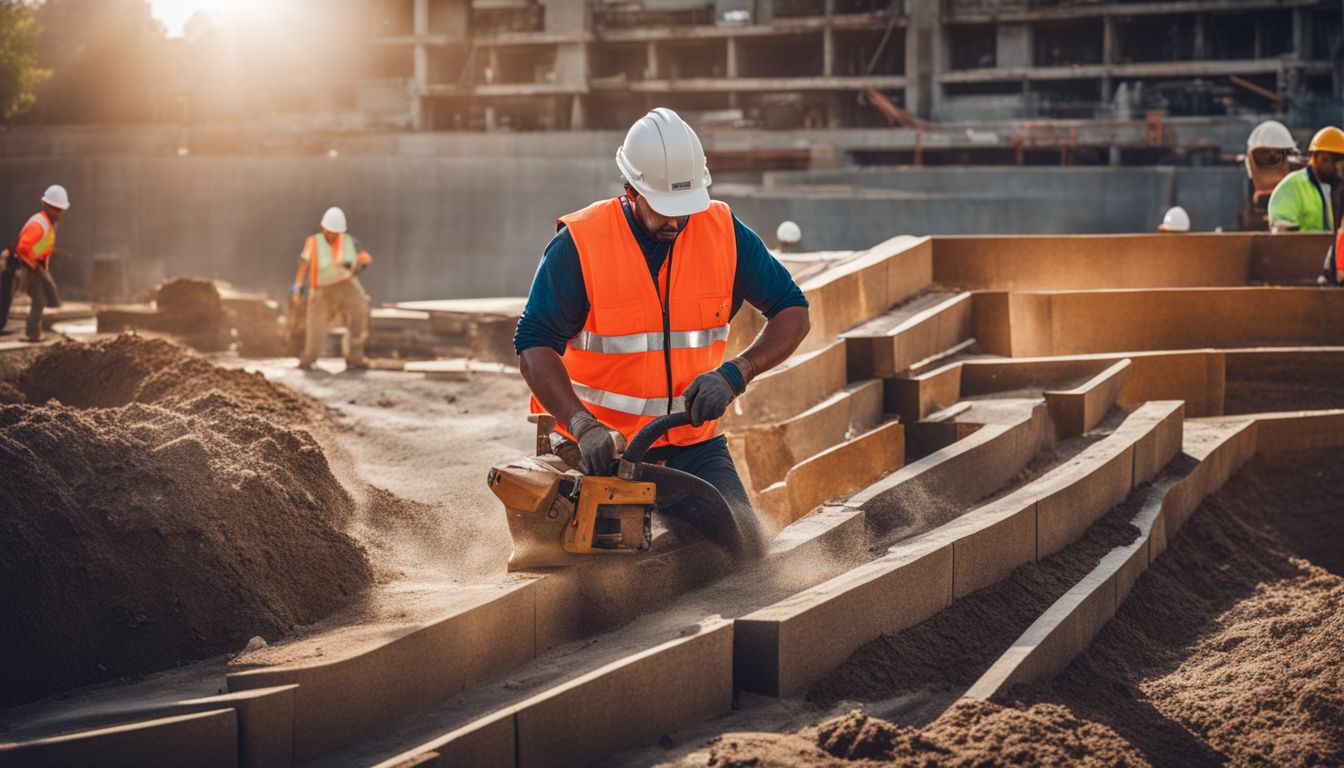
Concrete formwork plays a pivotal role in the construction of retaining walls and specialty concrete. It shapes the concrete into the desired configuration for retaining walls, ensuring stability and strength.
Additionally, it facilitates the creation of intricate designs and unique features in specialty concrete, allowing for tailored and visually appealing structures to be created.
Formwork for Retaining Walls
Formwork for retaining walls plays a crucial role in ensuring the stability and strength of these structures. Formwork is designed to hold the concrete in place as it sets, creating a mould that determines the shape and finish of the wall.
Utilising specialised formwork for retaining walls allows for precise construction, supporting intricate designs while maintaining structural integrity.
Using modular formwork systems tailored specifically for retaining walls can streamline the construction process, ensuring efficiency without compromising on quality. By incorporating adjustable panels and brackets into the design, businesses can easily adapt formwork to various dimensions and specifications required for different types of retaining walls.
Specialty Concrete Features and Formwork
Specialty concrete features and formwork play a crucial role in enhancing the structural integrity of construction projects. Incorporating specialty concrete features such as decorative elements, textured surfaces, and colored concrete can elevate the aesthetic appeal of buildings while providing durability and strength.
Formwork tailored for specialty concrete applications ensures precise molding and shaping, delivering bespoke designs that meet unique project requirements.
Incorporating specialty concrete features into building design not only enhances visual appeal but also underpins the structural strength of the construction. These features are meticulously designed to cater to an ever-changing realm of architectural demands, offering not only visually stunning outcomes but also robust support systems for long-lasting infrastructure.
The Backbone of Strength: Concrete Reinforcement Techniques
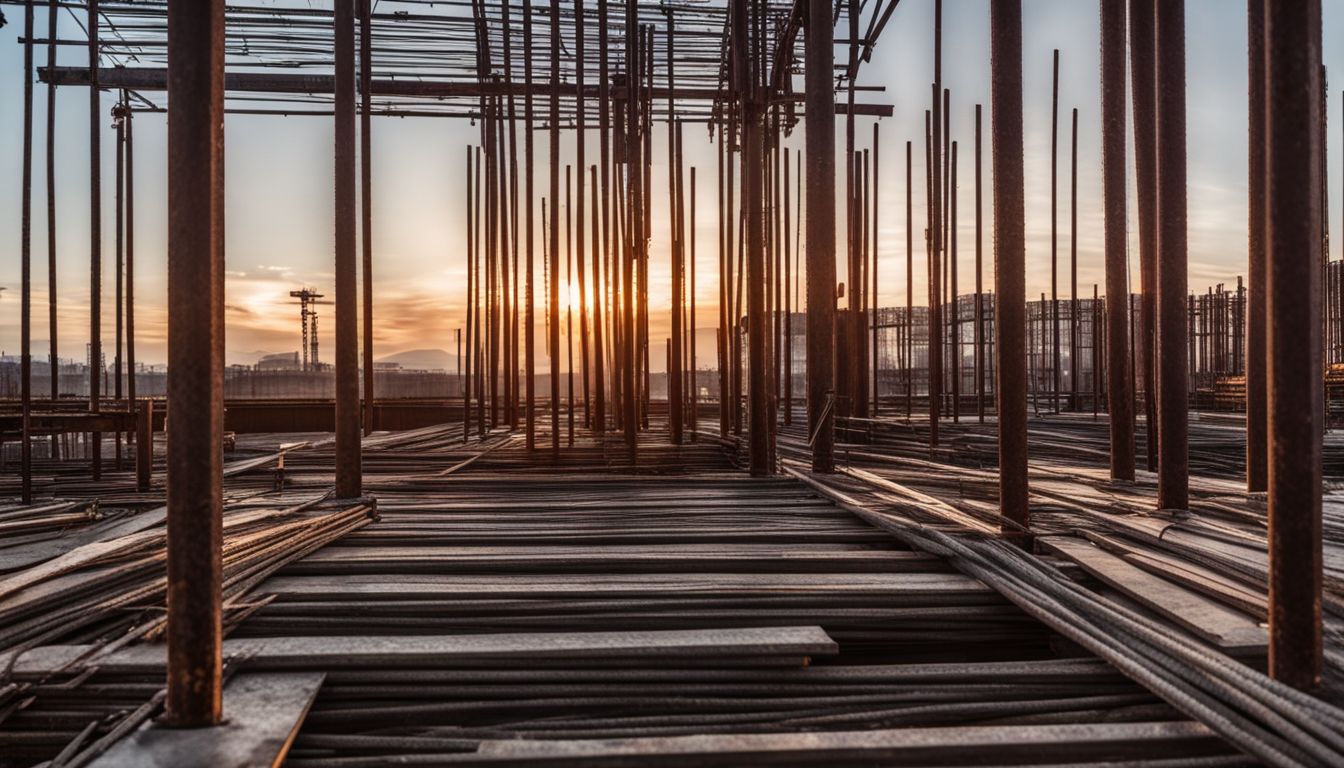
Concrete reinforcement techniques play a crucial role in enhancing the strength and durability of concrete structures. They ensure that the concrete can withstand various forces, such as tension and compression, resulting in robust and long-lasting constructions.
The application of wire mesh reinforcement, fibre mesh reinforcement, and rebar reinforcement is essential for fortifying the structural integrity of concrete elements.
Wire Mesh Reinforcement
Wire mesh reinforcement plays a crucial role in reinforcing concrete structures, providing tensile strength and preventing cracks. The interlocking steel wires are placed within the concrete to enhance its structural integrity and durability, making it an essential component for foundations, footings, and other structural members.
Wire mesh reinforcement helps distribute weight evenly and reduces the risk of concrete failure due to excessive loads or environmental factors.
Moreover, wire mesh reinforcement offers cost-effective solutions for reinforcing concrete, ensuring that construction projects maintain high standards of structural integrity without compromising on budget constraints.
Its flexibility also allows for tailored applications in various construction scenarios. Integrating wire mesh reinforcement into formwork design significantly enhances the overall robustness of concrete structures while mitigating potential risks associated with structural weaknesses.
Fibre Mesh Reinforcement
Fibre mesh reinforcement is a crucial element in reinforcing concrete structures. It involves integrating fibrous materials into the concrete mix to enhance its tensile strength and durability.
This technique significantly reduces cracking and shrinkage, making it an ideal choice for reinforcing retaining walls and other specialty concrete features. Fibre mesh reinforcement also offers added protection against temperature-induced stresses and provides long-term structural integrity, ensuring the longevity of the concrete construction.
Business owners should consider incorporating fibre mesh reinforcement in their construction projects to bolster the strength and resilience of their concrete structures. By leveraging this advanced technique, they can optimise the performance and lifespan of their buildings while minimising maintenance costs associated with structural wear-and-tear.
Rebar Reinforcement
Transitioning from discussing fibre mesh reinforcement to rebar reinforcement, it’s essential to understand the pivotal role of rebar in reinforcing concrete structures. Rebar, or steel reinforcement bars, is a crucial element in ensuring the structural integrity and strength of construction projects.
By strategically placing rebar within concrete forms, we enhance its tensile strength and overall durability. This reinforces the structural elements against external forces such as tension and bending while contributing to Maitland’s robust construction landscape.
Reinforcing with rebar ensures that our constructions align with safety regulations and are equipped to withstand ever-present hazards. The use of rebar not only strengthens foundations but also secures footings and various structural members, providing foundational support for significant constructions across Maitland’s evolving urban architecture.
From Design to Reality: The Critical Role of Formwork in Concrete Construction
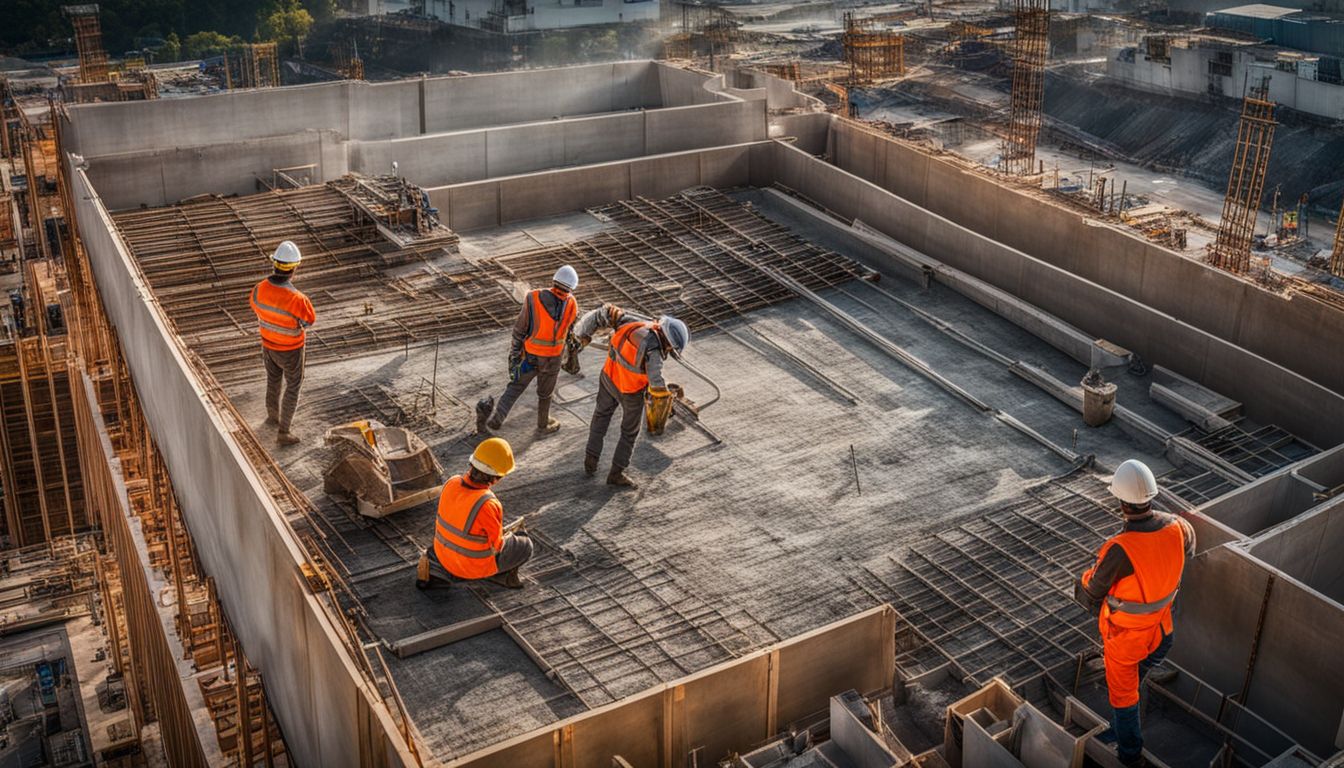
Formwork plays a critical role in translating the design of concrete structures into reality. It provides the necessary framework and support for pouring and shaping concrete into the desired form, ensuring that it cures to achieve its intended strength and shape.
Formwork is essential in creating foundations, footings, and structural members, thus underpinning the structural integrity of concrete constructions. The intricacies of formwork are pivotal in ensuring that designs are accurately realised on-site, contributing significantly to Maitland’s construction industry.
Moving forward to “9. Understanding Relief Joints: A Key Element in Concrete Construction”, we delve into another facet crucial for maintaining structural integrity.
Understanding Relief Joints: A Key Element in Concrete Construction
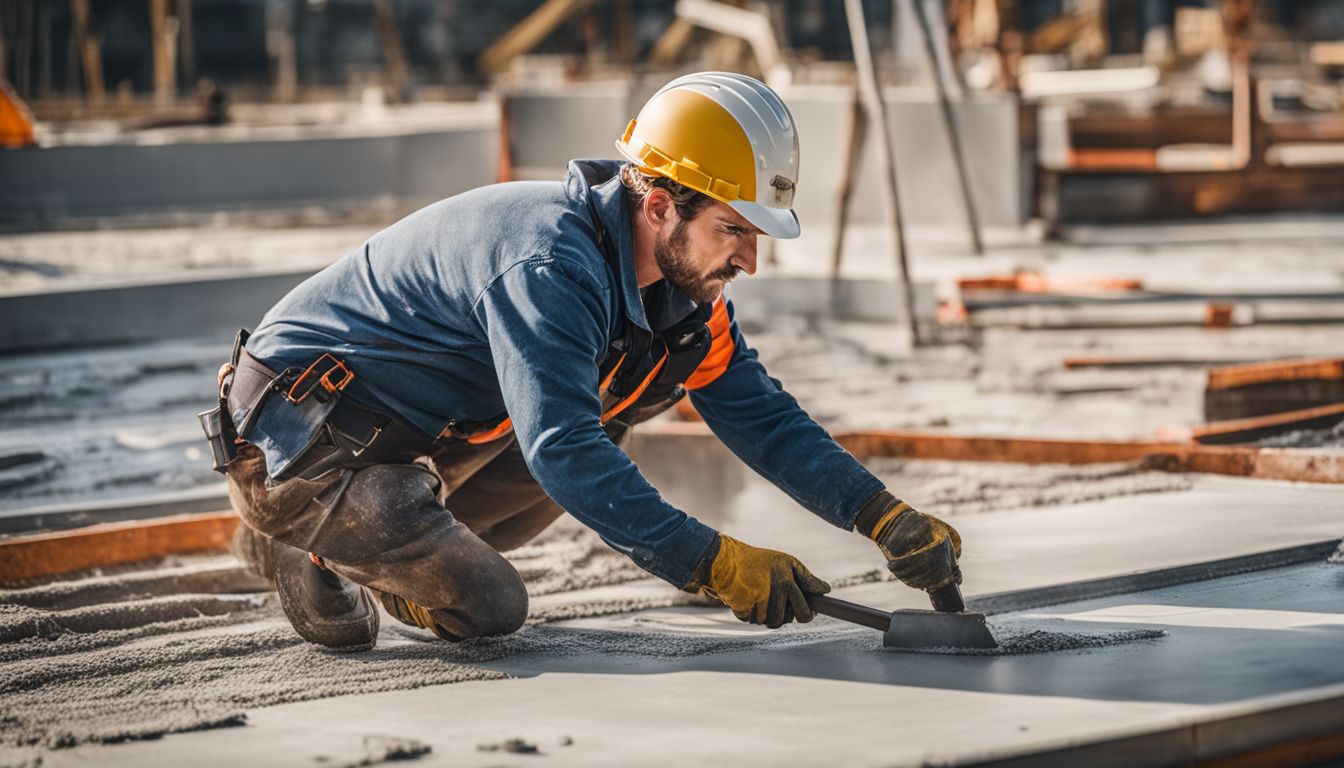
Relief joints play a crucial role in concrete construction, allowing for the natural movement of the material and preventing cracks. These joints are strategically placed to relieve internal stresses caused by temperature changes, shrinkage, and external loads on the concrete structure.
By incorporating relief joints into the design and construction of concrete elements such as slabs, walls, and pavements, structural integrity is preserved while reducing the risk of unsightly cracks or damage.
Strategic placement of relief joints helps to prevent uncontrolled cracking in concrete structures. It ensures that stress is managed effectively within the material while maintaining its strength and durability over time.
Understanding how relief joints function is essential for ensuring the long-term stability and performance of any concrete construction project.
Moving on from understanding relief joints…
Safety Regulations in Formwork

Safety regulations in formwork ensure the protection of workers and the integrity of the structure. Implementing strict safety protocols minimises hazards and promotes a secure work environment.
Common Hazards and Controls
– Operating heavy machinery without proper training can lead to accidents. Ensure all workers undergo comprehensive equipment training to mitigate these risks.
– Falling from heights is a significant hazard on construction sites. Implement fall protection systems, such as guardrails and personal fall arrest systems, to ensure worker safety at elevated work areas.
– Exposure to hazardous substances like concrete dust or chemicals poses health risks. Provide proper ventilation, personal protective equipment (PPE), and regular safety training to minimise exposure and potential health issues for workers.
The Importance of Bracing in Formwork
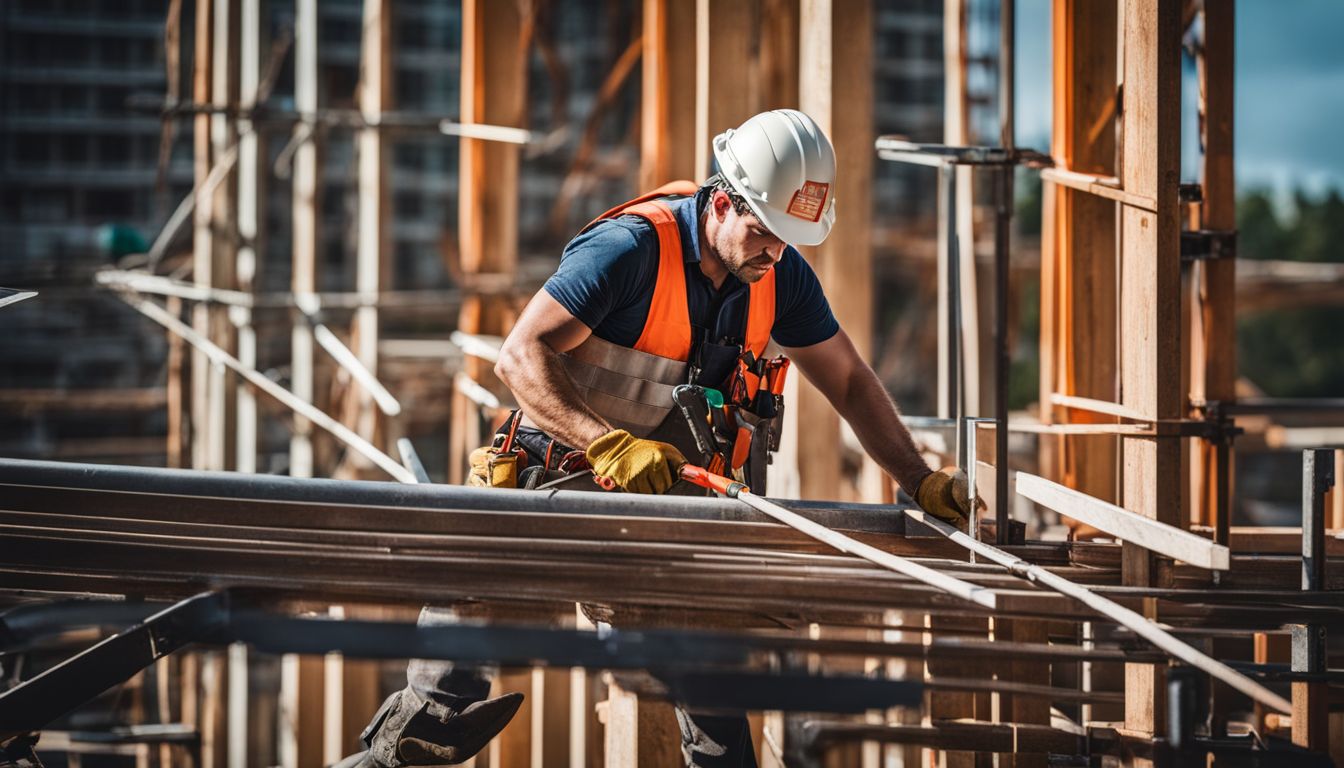
Bracing in formwork is vital for maintaining structural integrity and ensuring safety. Read on to delve into the crucial role played by bracing in formwork mastery.
Understanding Bracing Requirements
Bracing requirements play a crucial role in ensuring the structural integrity of formwork. Properly installed braces enhance the stability of the formwork, reinforcing its ability to withstand concrete placement and external forces during construction.
Regular inspections are imperative to assess brace condition and confirm they meet safety standards. Braces should be strategically placed at specific intervals to provide optimal support for the formwork system, contributing significantly to overall construction safety and efficiency.
In addition, bracing also supports the lateral loads that occur during concrete placement and compaction, preventing any potential failure or collapse. It serves as a vital component in maintaining the shape and alignment of formwork under varying pressures, thereby safeguarding both workers and the structure itself against potential hazards or structural compromise.
Role of Bracing in Structural Integrity
Bracing plays a crucial role in upholding the structural integrity of construction projects. It ensures stability during the formwork process, underpinning the strength of the entire framework.
Bracing not only supports structural elements but also reinforces safety measures by preventing potential collapses or deformations. Its strategic placement aligns with safety regulations and mitigates common hazards associated with concrete construction, promoting a secure work environment for all involved.
Bracing fortifies foundational elements such as footings and walls, bolstering their resilience against external forces. This essential support element significantly contributes to the overall robustness and durability of structures, guaranteeing their steadfastness throughout different stages of construction.
Formwork Mastery: The Backbone of Maitland’s Structural Integrity
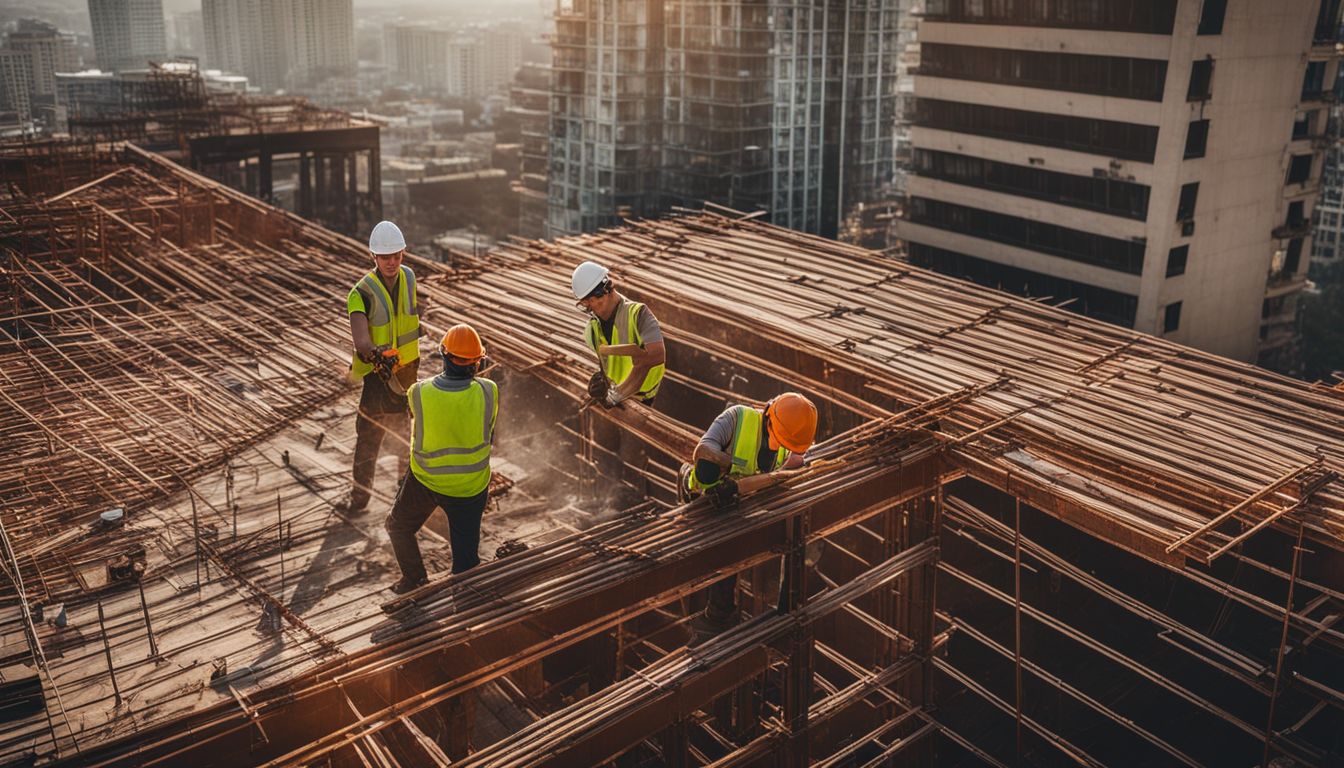
Formwork Mastery serves as the backbone of Maitland’s structural integrity, ensuring the construction industry upholds robust standards. To uncover the intricacies of formwork mastery and its vital contribution to Maitland’s structural integrity, delve into this insightful article.
The Role of Formwork Mastery in Maitland’s Construction Industry
Formwork mastery plays a pivotal role in Maitland’s construction industry, ensuring the structural integrity of buildings and infrastructure. Our expertise in formwork directly influences the quality, safety, and efficiency of construction projects.
By leveraging specialised techniques and materials tailored towards Maitland’s ever-evolving construction landscape, we ensure that every structural element from foundations to retaining walls meets stringent standards.
This meticulous approach underpins not only our suite of services but also the strength and durability of Maitland’s built environment.
Our formwork mastery is designed to enhance the robustness of concrete structures throughout Maitland by implementing bespoke solutions that address the complexities of modern construction.
How Formwork Contributes to Maitland’s Structural Integrity
Formwork plays a crucial role in upholding Maitland’s structural integrity. It supports the concrete during its curing phase, ensuring that it maintains the intended shape and alignment of various structural elements like foundations, footings, and retaining walls.
This process significantly contributes to the overall stability and strength of the construction. Formwork also facilitates precision in specialised concrete work for features such as specialty concrete designs where attention to detail is paramount.
Moreover, formwork provides essential support for reinforcement techniques like rebar, wire mesh, and fibre mesh reinforcements. By supporting these reinforcement materials during concrete pouring, formwork ensures that they are positioned optimally to enhance the structural capacity of the building or infrastructure.
Conclusion
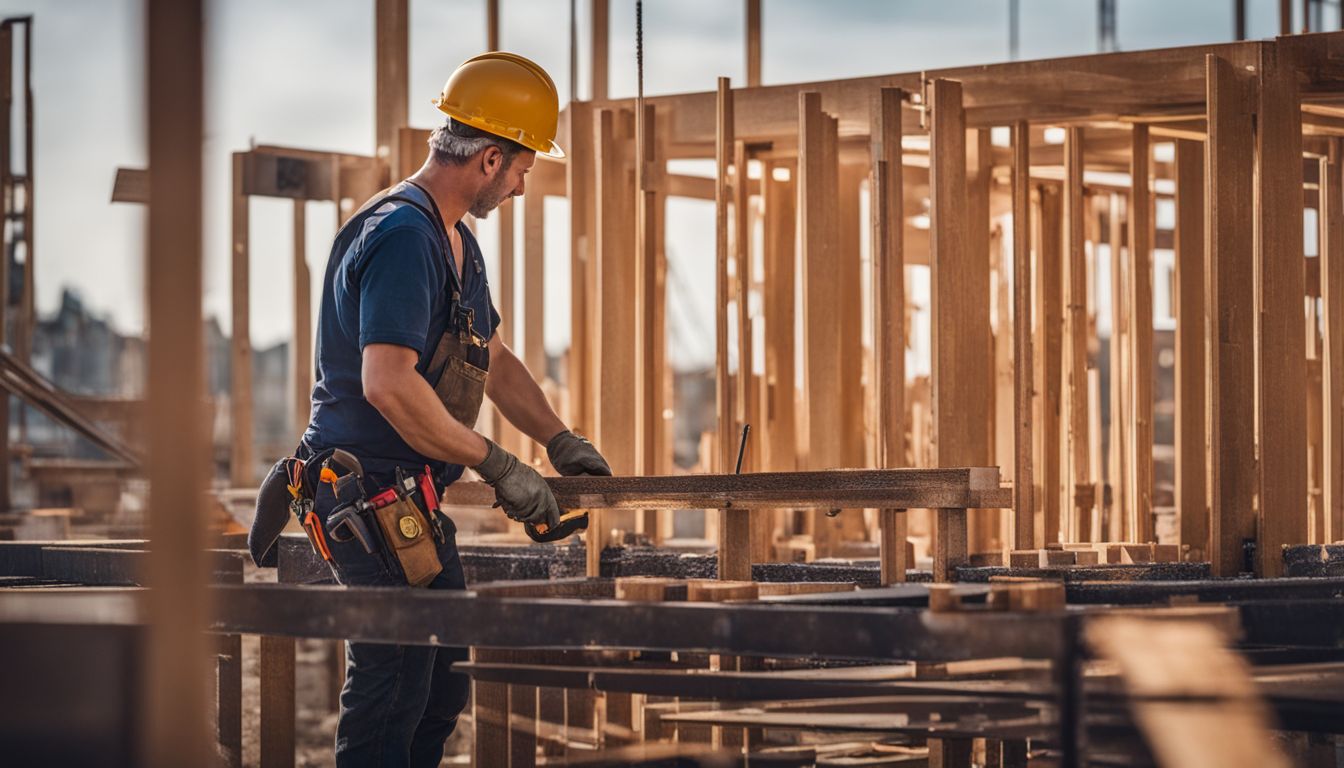
Formwork mastery is the cornerstone of Maitland’s structural integrity. It underpins the strength and durability of construction projects, ensuring robust and enduring results. From foundations to retaining walls, formwork techniques are tailored to enhance structural elements meticulously.
Safety regulations in formwork must be adhered to for a secure construction environment.
The art of concrete formwork plays a pivotal role in the ever-evolving construction realm by not only providing support but also enhancing its bespoke features. Bracing requirements are crucial towards maintaining the integrity of structures, unlocking their secrets for long-term durability.
